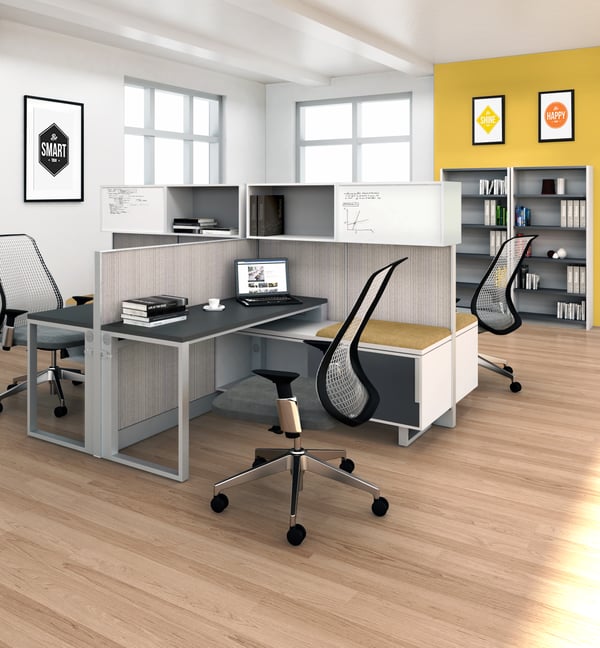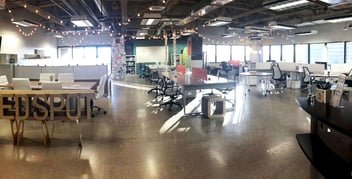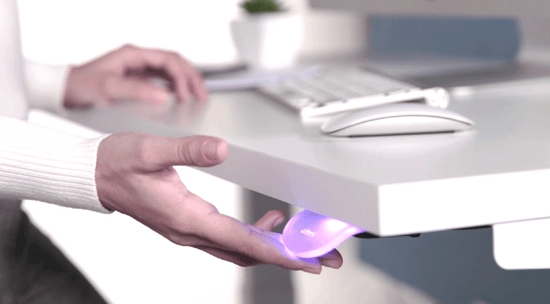The return of office dividers as a new normal in coronavirus
The use of office dividers in the workplaces can help improve safety for our return in the new normal.
Social distancing rules will lead to new partitions between workspaces

“Creating physical barriers and installing office dividers will help reduce the risks and keep the employees and staff safe.”
Traditional office cubicles have been a fixture in the workplace for more than half a century. They were used as a way to maximize the workload per square foot of office space. Businesses are determined to return to a normal workload as soon as possible. However, there is still a lot of concern about the safety of workers. As companies contemplate employees’ return to their offices and workspaces, many consider some meaningful changes, including erecting office dividers. The purpose of putting up physical barriers is to protect employees and minimize the risk of contamination, as much as possible, without making structural changes. The use of office dividers is becoming much more evident in a post-Covid-19 corporate environment, as companies may not have the time nor resources to design a whole new office model in a short time, so office dividers are ideal as they provide a quick, adaptable and cost-effective solution.
Install portable transparent plastic shields barriers
.jpg?width=600&name=SYNERGY%2048O%20(1).jpg)
“To prevent the spread of droplets, desks will be separated by taller partitions and dividers, and we will probably see the use of canopy items that partially extend over each workspace.”
Many companies, such as cafes, gas stations, and grocery stores, have installed temporary transparent plastic shields and dividers to reduce the risk of coronavirus transmission. The same types of physical barriers can be used in the office environment where there is heavy foot traffic or in-person interactions.
Portable transparent plastic shields can be installed in meeting rooms, worker desks, or corridors to separate people and ensure social distance regulations. This protects workers from colleagues while also allowing direct visual contact. Not only is this item a significant barrier to the spread of respiratory diseases, but it is also a clear statement from the company to its staff that it takes serious action in terms of health and social distance. Being transparent, the open-plan office retains its interactive characteristic. As such, employees still feel that they are part of the team.
Reconsider the cubicles
Over the last few decades, cubicles have fallen out of fashion in modern workplaces and replaced by open office design elements. But the coronavirus pandemic has forced people to value private, personal spaces.
Transparent plastic cubicles can replace the open office concept to help foster the feeling of an open office environment while providing a private space for individual employees. Further, free-standing barriers can also be placed on the floor between seated employees, to provide a higher level of protection.
Transform the conference rooms into "officles"
While cubicles appear to be returning due to COVID-19, designers, building owners, and executives may erase one wall in conference halls to promote a healthier workplace. These spaces are referred to as "officles" as they're a cross between an office and a cubicle. Since these newly renovated spaces only have three walls, air can circulate freely across the room and prevent germs from gathering in one place.
Modern trends of designing "residential" style workplaces, along with maximizing density and efficiency per square meter, are giving way to the challenges of social distance and safety. The attractive workspace would no longer be one full of soft seats and board games for workers, but rather one where they feel safe. Dividing screens and reorientation of furniture are very much evident in the present circumstances. In the longer term, companies will need to reorganize and office dividers will be given much more importance.


.jpg?width=352&name=107635358_3130537506983853_3250778887503063623_o%20(1).jpg)

